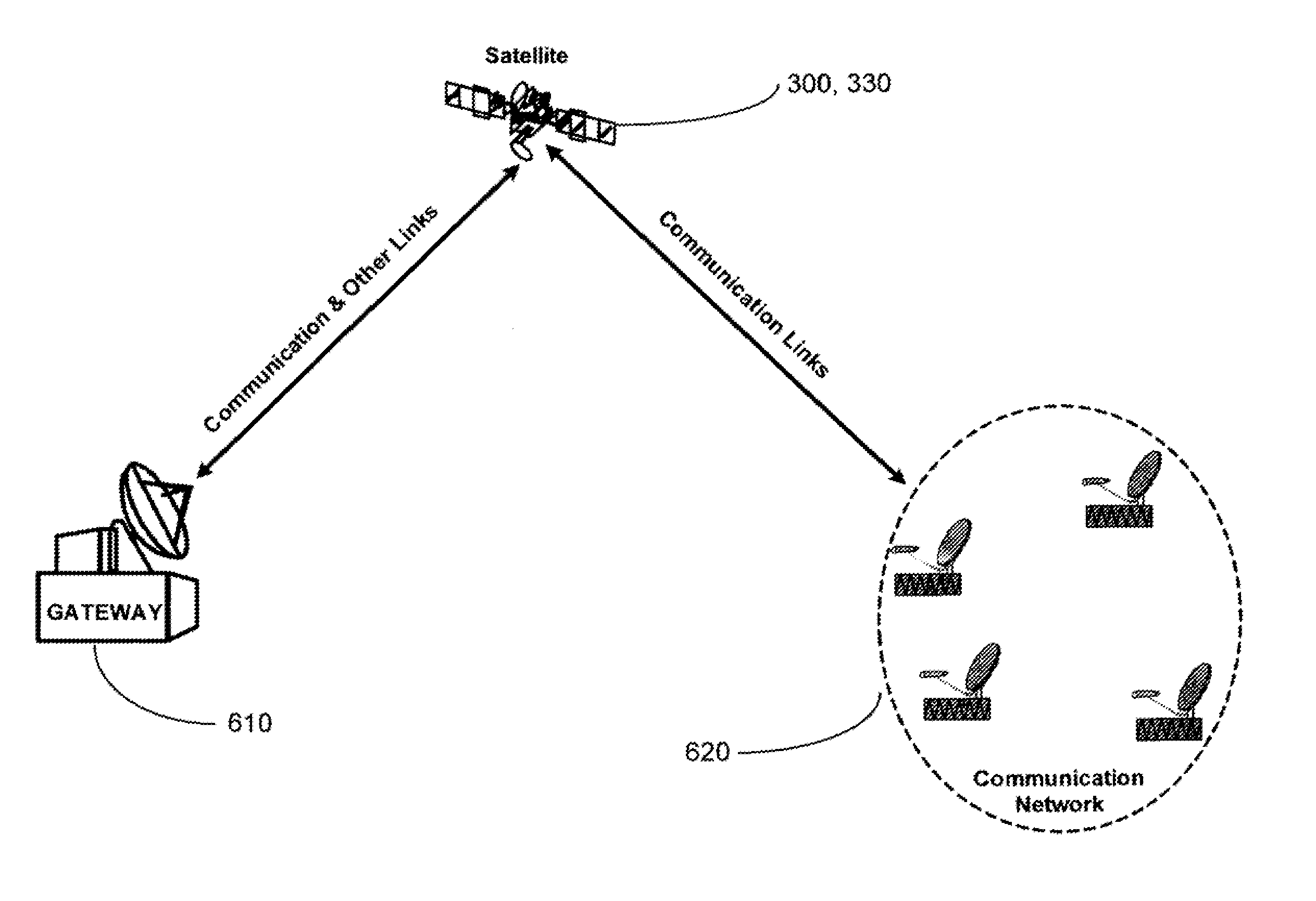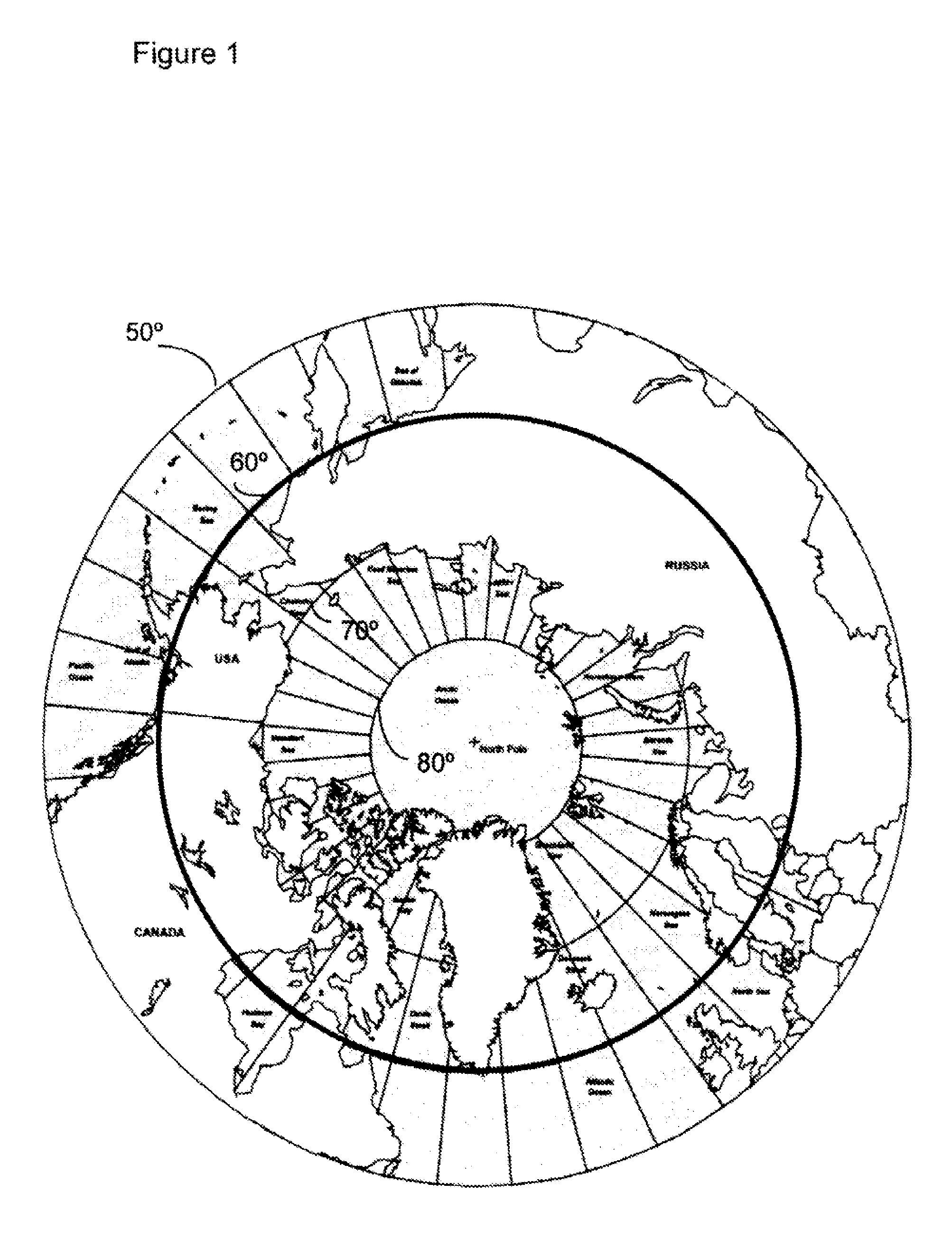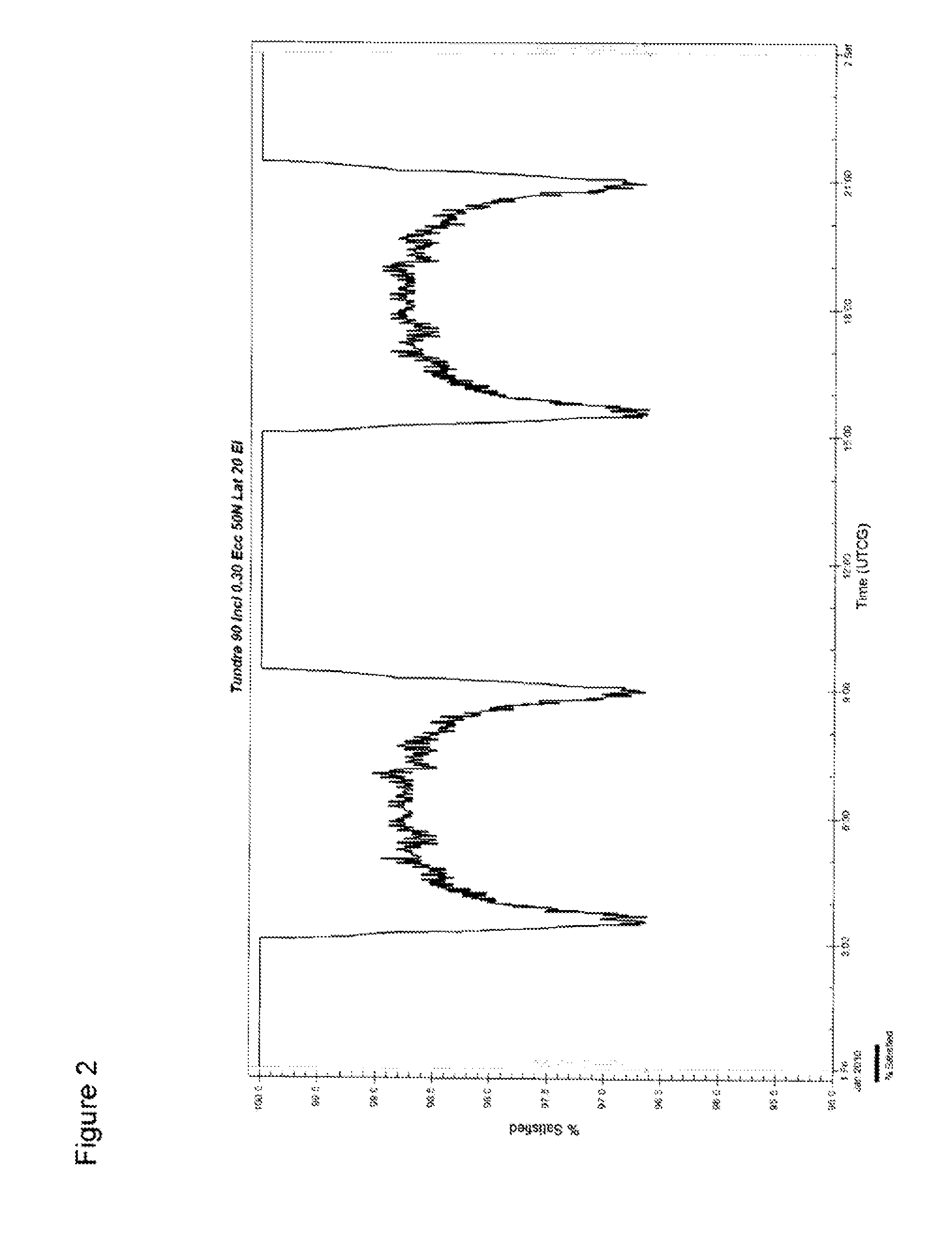Satellite system and method for circumpolar latitudes
a satellite system and circumpolar latitude technology, applied in the field of satellite systems, can solve the problems of poor coverage of higher latitudes, not collecting useful data, and only obtaining orbital data
- Summary
- Abstract
- Description
- Claims
- Application Information
AI Technical Summary
Benefits of technology
Problems solved by technology
Method used
Image
Examples
Embodiment Construction
[0035]Contrary to the teachings in the art it has been determined mat a satellite system and method may be provided using satellites in 24 sidereal hour orbits, (geosynchronous) with inclinations, orbital planes, right ascensions and eccentricities chosen to optimize coverage of a particular service area located at high latitudes, A constellation of two satellites can provide continuous coverage of the circumpolar region, which is defined as the area with greater than 60° latitude in either the northern or southern hemispheres (see FIG. 1, which identifies the 60° latitude area of the northern hemisphere). The satellites in this orbit avoid the inner Van Allen belt, of high energy protons.
[0036]For example, as shown in FIG. 2, a constellation of two satellites at a 90° inclination and 0.3 eccentricity, will provide a minimum 20° elevation angle for the entire area above 50° North, for much of the time, with the percentage area coverage at a minimum 20° elevation angle never less tha...
PUM
 Login to View More
Login to View More Abstract
Description
Claims
Application Information
 Login to View More
Login to View More - R&D
- Intellectual Property
- Life Sciences
- Materials
- Tech Scout
- Unparalleled Data Quality
- Higher Quality Content
- 60% Fewer Hallucinations
Browse by: Latest US Patents, China's latest patents, Technical Efficacy Thesaurus, Application Domain, Technology Topic, Popular Technical Reports.
© 2025 PatSnap. All rights reserved.Legal|Privacy policy|Modern Slavery Act Transparency Statement|Sitemap|About US| Contact US: help@patsnap.com



